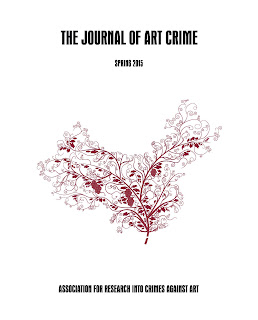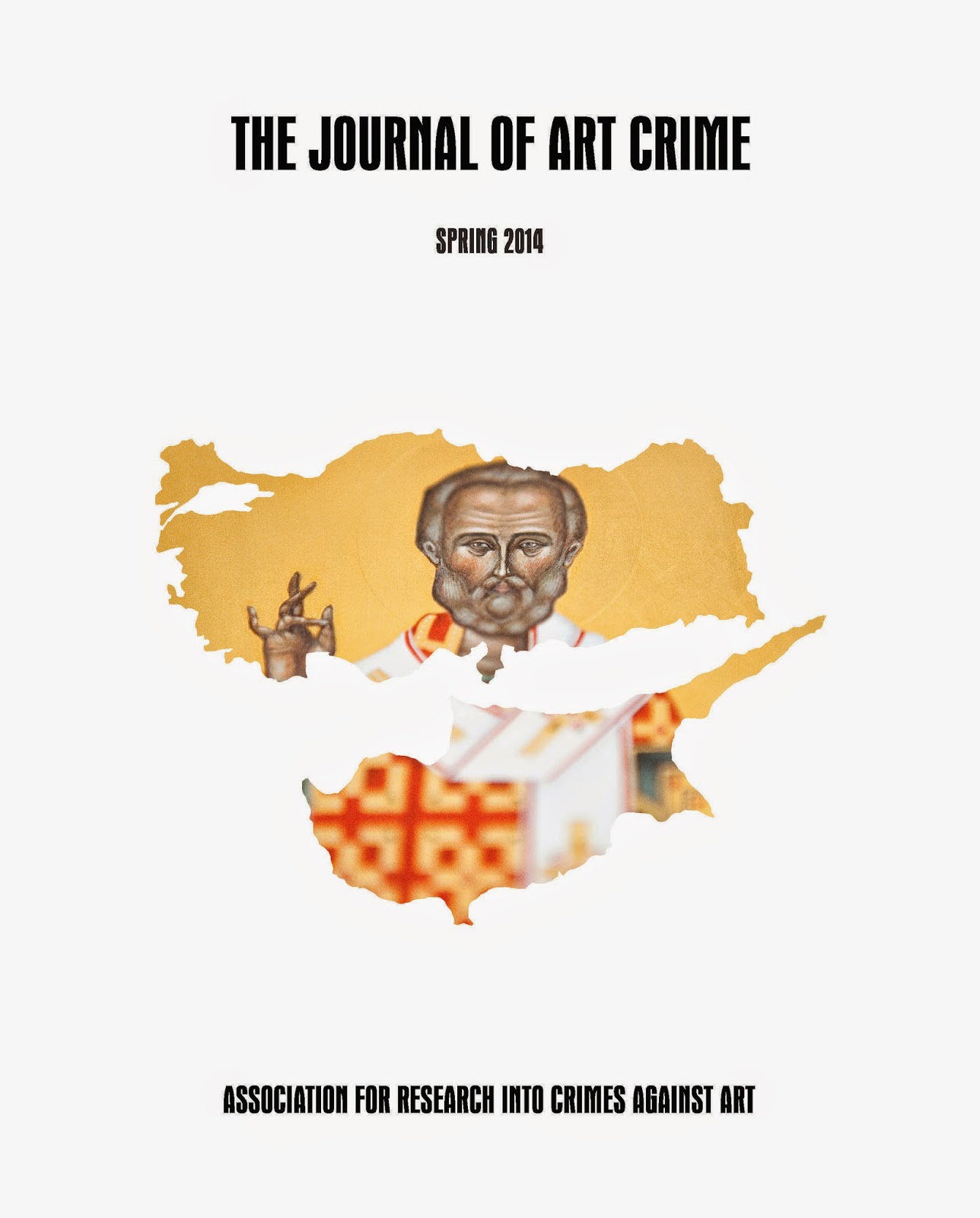Tuesday, July 21, 2015 -  book review,cultural heritage,Ethics,Marc Balcells,practice,Spring 2015 issue,the Journal of Art Crime,theory
book review,cultural heritage,Ethics,Marc Balcells,practice,Spring 2015 issue,the Journal of Art Crime,theory
 No comments
No comments
 book review,cultural heritage,Ethics,Marc Balcells,practice,Spring 2015 issue,the Journal of Art Crime,theory
book review,cultural heritage,Ethics,Marc Balcells,practice,Spring 2015 issue,the Journal of Art Crime,theory
 No comments
No comments
Book Review: Marc Balcells on "Cultural Heritage Ethics: Between Theory and Practice", Edited by Constantine Sandis
Marc Balcells reviews "Cultural Heritage Ethics: Between Theory and Practice, Edited by Constantine Sandis" in the Spring 2015 issue of The Journal of Art Crime, edited by Noah Charney (with Marc Balcells and Christos Tsirogiannis) and published by ARCA:
Here's a link to ARCA's website about access to The Journal of Art Crime.
Sadly, a book of cultural heritage ethics is always necessary, it seems. But with the recent events going on in several zones of the globe, an edited collection of essays like this becomes more and more essential and a remainder of both the fragility of cultural heritage and the bestiality that can be inflicted upon it. Thus, departing from a methodology based mostly on case studies, the book has been written by experts coming from different sectors in the field, ranging from academia to lawyers, or from activists to journalists. A complete, detailed list of contributors includes Constantine Sandis, James Fox, Benjamin Ramn, Nira Wickramasinghe, William St Clair, Sudeshna Guha, Geoffrey Scarre, Sir John Boardman, ARCA’s professor Tom Flynn, Sir Mark Jones, Michael F. Brown, Geoffrey Belcher and Marie Cornu.
The book is structured in very marked and clearly distinct blocks. The first one deals with meaning and memory. Sandis’ chapter mostly delineates the field of cultural heritage ethics and raises the very interesting question of whether we can talk about a unified account of what we consider cultural heritage and cultural heritage ethics or not. James Fox, in Chapter Two, and using as a case study the prohibition by FIFA of wearing poppies on English football uniforms in a match against Spain, writes about potent political symbols. Chapter Three, written by Benjamin Ramm, deals with the attacks to- wards the values of shared culture, and how, in this context, the concept of heritage acquires a new meaning. This is, by far, the most theoretical chapter of the whole book.
Marc Balcells is the Associate Editor of The Journal of
Art Crime. A Spanish criminologist, he holds degrees in
Law, Criminology and Human Sciences, and masters both
in Criminal Law, and the ARCA Postgraduate Certificate
Program in Art Crime and Cultural Heritage Protection.
A Fulbright scholar, he is currently completing his PhD in
Criminal Justice at The Graduate Center, CUNY. His research
revolves around criminological aspects of archaeological
looting, though he has also written about other forms of art
crime. He has taught both Criminal Law and Criminology
courses as an associate at the Universitat Autònoma de
Barcelona and the Universitat Oberta de Catalunya (Spain)
and is a Graduate Teaching Fellow in the Political Science
department at John Jay College. He is also a criminal defense
attorney whose practice is located in Barcelona.
Here's a link to ARCA's website about access to The Journal of Art Crime.



